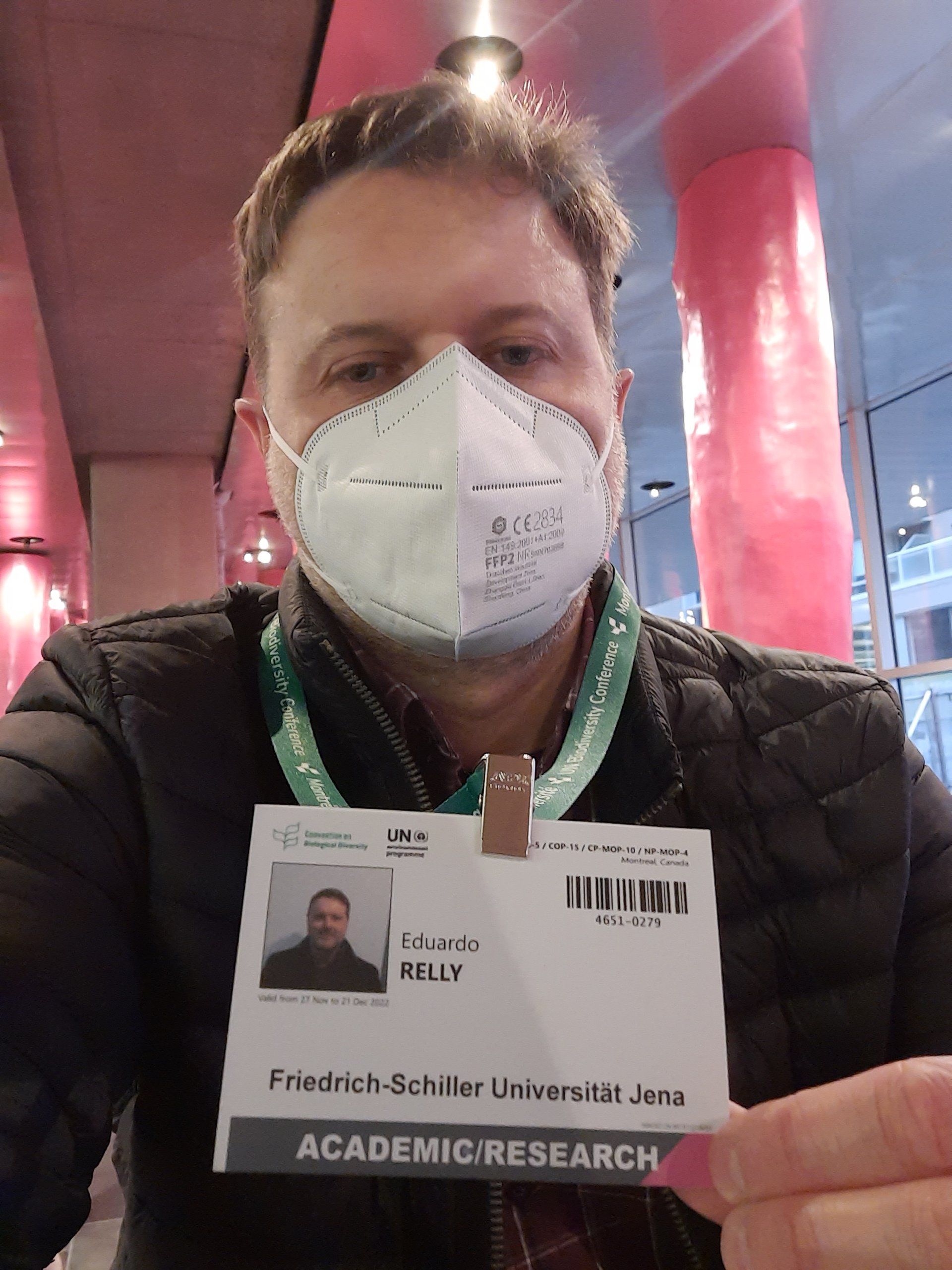Eduardo Relly as observer at the UN Biodiversity Conference
Eduardo Relly from JRT03 is attending the 15th UN Conference of the Parties (COP15) in Montreal.
Field report Eduardo Relly
After several postponements, the 15th Conference of the Parties to the Convention on Biological Diversity (CBD COP 15) will take place in Montreal. Chaired by China, CBD COP 15 will be the most important UN biodiversity conference in 10 years, as new frameworks, goals and targets for biodiversity conservation will be drafted and discussed. At the same time, the Aichi Targets agreed upon in Nagoya in 2010 at the 10th UN Biodiversity Conference and their implementation measures will be reviewed for success.
For the negotiations in Canada, China (with strong support from Brazil) would like to see the three core elements of the 1992 Convention on Biological Diversity, namely conservation of nature, sustainable use of ecosystems, and equitable sharing of benefits from the use of genetic resources, treated with equal urgency and fully integrated into the negotiation processes (at the moment, some targets are treated separately due to global power constellations). The conference includes four major sessions:
a.) 5th meeting of the open-ended working group on the post-2020 global biodiversity framework.
b.) 15th meeting of the biodiversity conference on the Convention on Biological Diversity
c.) 10th session of the Species Survival Conference, which serves as the meeting of signatories to the Cartagena Protocol on Biosafety
(COP-MOP 10)
d.) 4th session of the Conference on Biological Diversity, which serves as the meeting of the members of the "Nagoya Protocol on
Access and Benefit-sharing" (COP-MOP 4).

For me, objective number 3 is of utmost importance for the realization of my project in SFB (JRT03). In particular, I will attend the 4th meeting of the Species Conservation Conference, as it directly affects the research we are doing in Jena. This meeting will primarily address the widespread perception of the failure of the Nagoya Protocol by focusing on the opportunities offered by digital sequence information (DSI) of genetic resources. DSI provides a kind of "universal map of biodiversity" as digitization and genetic engineering enable the rapid transfer of gene sequences.
This means that companies, researchers, and others no longer need to go into the forest to collect their material samples; genetic resources can be accessed online, regardless of the materiality of the resource. The big issue lies in the fact that the 1992 Convention defines genetic resources as "material," not "information," as DSI proponents claim. By defining genetic resources as information, the entire edifice of the Convention and the Nagoya Protocol changes, directly impacting access and consent of traditional communities worldwide.
CBD COP 15 will be a good opportunity to see on the ground how ownership of genetic resources is constructed and negotiated. Even though the discussion on patents is being held in a different forum (World Intellectual Property Organization), the issues of access and consent that are being negotiated now are constitutive elements for filing a patent. For example, in countries such as Brazil, compliance with laws governing access to biodiversity and traditional knowledge are required to file a patent application.
Outcome CBD COP15
After tough and intense negotiations, the approximately 200 Parties to the Convention adopted the World Convention on Biological Diversity at the 15th UN Biodiversity Conference. In it, the nations commit to conserving and protecting biological diversity.
- By 2030, at least 30 percent of the landscape and oceans are to become protected areas.
- Countries pled ge to invest more money in protecting biodiversity: Richer countries are to pay poorer countries around $20 billion a year by 2025.
- Risks to nature from pesticides and fertilizers are to be halved.